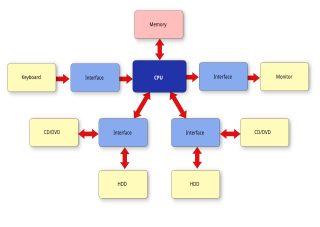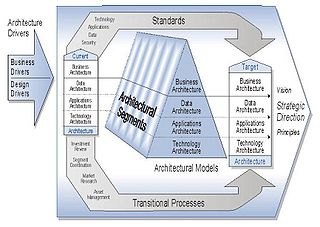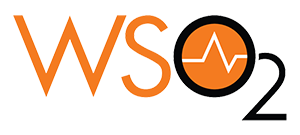
Solution architecture is a term used in information technology with various definitions, such as "a description of a discrete and focused business operation or activity and how IS/IT supports that operation". [1]

Solution architecture is a term used in information technology with various definitions, such as "a description of a discrete and focused business operation or activity and how IS/IT supports that operation". [1]
The Open Group's definition of solution architecture, as provided above, is accompanied by the following three from Scaled Agile, Gartner and Greefhorst/Proper. The Open Group does not recognize the role "solution architect" in its TOGAF skills framework; on the other hand, Glassdoor advertised 55,000 Solution Architect roles in August 2020. [2]
A typical property of solution architecture, in contrast to other types of Enterprise Architecture, is that it often seeks to define a solution within the context of a project or initiative. [6] This close association to actual projects and initiatives means that solution architecture is the means to execute or realise a technology strategy.
According to Forrester Research, solution architecture is one of the key components by which Enterprise Architecture delivers value to the organization. It entails artifacts such as a solution business context, a solution vision and requirements, solution options (e.g. through RFIs, RFPs or prototype development) and an agreed optimal solution with build and implementation plans ("road-map"). [7]
Since The Open Group does not recognize a unique Solution Architect role, a relevant link for these mentioned artifacts can be to the Business and Systems Analyst roles. The Open Group's definition of solution architecture is broader than Forrester's (see aforementioned definition).
According to a 2013 paper published by the Federation of Enterprise Architecture Professional Organizations, solution architecture includes business architecture, information architecture, application architecture, and technology architecture operating at a tactical level and focusing on the scope and span of a selected business problem. In contrast, enterprise architecture, which also includes the aforementioned four types of architecture, operates at the strategic level and its scope and span is the enterprise rather than a specific business problem. [8] [9]

Software architecture is the set of structures needed to reason about a software system and the discipline of creating such structures and systems. Each structure comprises software elements, relations among them, and properties of both elements and relations.
Enterprise architecture (EA) is a business function concerned with the structures and behaviours of a business, especially business roles and processes that create and use business data. The international definition according to the Federation of Enterprise Architecture Professional Organizations is "a well-defined practice for conducting enterprise analysis, design, planning, and implementation, using a comprehensive approach at all times, for the successful development and execution of strategy. Enterprise architecture applies architecture principles and practices to guide organizations through the business, information, process, and technology changes necessary to execute their strategies. These practices utilize the various aspects of an enterprise to identify, motivate, and achieve these changes."

The Open Group Architecture Framework (TOGAF) is the most used framework for enterprise architecture as of 2020 that provides an approach for designing, planning, implementing, and governing an enterprise information technology architecture. TOGAF is a high-level approach to design. It is typically modeled at four levels: Business, Application, Data, and Technology. It relies heavily on modularization, standardization, and already existing, proven technologies and products.

A system architecture is the conceptual model that defines the structure, behavior, and more views of a system. An architecture description is a formal description and representation of a system, organized in a way that supports reasoning about the structures and behaviors of the system.

Unicom System Architect is an enterprise architecture tool that is used by the business and technology departments of corporations and government agencies to model their business operations and the systems, applications, and databases that support them. System Architect is used to build architectures using various frameworks including TOGAF, ArchiMate, DoDAF, MODAF, NAF and standard method notations such as sysML, UML, BPMN, and relational data modeling. System Architect is developed by UNICOM Systems, a division of UNICOM Global, a United States-based company.

An enterprise architecture framework defines how to create and use an enterprise architecture. An architecture framework provides principles and practices for creating and using the architecture description of a system. It structures architects' thinking by dividing the architecture description into domains, layers, or views, and offers models – typically matrices and diagrams – for documenting each view. This allows for making systemic design decisions on all the components of the system and making long-term decisions around new design requirements, sustainability, and support.
Enterprise information security architecture is the practice of designing, constructing and maintaining information security strategies and policies in enterprise organisations. A subset of enterprise architecture, information security frameworks are often given their own dedicated resources in larger organisations and are therefore significantly more complex and robust than in small and medium-sized enterprises.

In the business sector, business architecture is a discipline that "represents holistic, multidimensional business views of: capabilities, end‐to‐end value delivery, information, and organizational structure; and the relationships among these business views and strategies, products, policies, initiatives, and stakeholders."
In information systems, applications architecture or application architecture is one of several architecture domains that form the pillars of an enterprise architecture (EA).

An architecture domain in enterprise architecture is a broad view of an enterprise or system. It is a partial representation of a whole system that addresses several concerns of several stakeholders. It is a description that hides other views or facets of the system described. Business, data, application and technology architectures are recognized as the core domains in the most of proposed concepts concerned with the definition of enterprise architecture.

WSO2 is an open-source technology provider founded in 2005. It delivers software and cloud solutions that provide foundational technologies for application development and identity and access management (IAM). This represents an expansion upon its original focus on integrating application programming interfaces (APIs), applications, and web services locally and across the Internet.

A view model or viewpoints framework in systems engineering, software engineering, and enterprise engineering is a framework which defines a coherent set of views to be used in the construction of a system architecture, software architecture, or enterprise architecture. A view is a representation of the whole system from the perspective of a related set of concerns.
Enterprise interoperability is the ability of an enterprise—a company or other large organization—to functionally link activities, such as product design, supply chains, manufacturing, in an efficient and competitive way.

Dragon1 EA Method (Dragon1) is an open method for visual enterprise architecture and enterprise architecture framework. Dragon1 covers the development of a variety of architectures, such as enterprise, governance, business, information and technical architecture. It also covers solution architecture, reference architectures and security architecture or Human Capital Architecture (HCA).
The Banking Industry Architecture Network e.V. (BIAN) is an independent, member owned, not-for-profit association to establish and promote a common architectural framework for enabling banking interoperability. It was established in 2008.
The history of business architecture has its origins in the 1980s. In the next decades business architecture has developed into a discipline of "cross-organizational design of the business as a whole" closely related to enterprise architecture. The concept of business architecture has been proposed as a blueprint of the enterprise, as a business strategy, and also as the representation of a business design.
Danny Greefhorst is a Dutch enterprise architect and consultant at ArchiXL, known for his work in the field of enterprise architecture.
A data architect is a practitioner of data architecture, a data management discipline concerned with designing, creating, deploying and managing an organization's data architecture. Data architects define how the data will be stored, consumed, integrated and managed by different data entities and IT systems, as well as any applications using or processing that data in some way. It is closely allied with business architecture and is considered to be one of the four domains of enterprise architecture.
ADOIT is an enterprise architecture management tool that provides functionality and methods for enterprise analysis, design, planning, and implementation. The platform supports alignment and improvement of dependencies between business and IT as well as manages and analyses the dependencies between different organizational assets. The EA suite ADOIT is based on various international standards, including TOGAF, ArchiMate, ITIL, and COBIT. It is ArchiMate 3.1 and TOGAF-9 certified. Developed by the BOC Group, ADOIT represents the company's second flagship product along with their business process management and analysis tool, ADONIS NP.